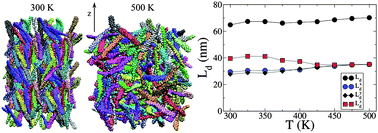Does supramolecular ordering influence exciton transport in conjugated systems? Insight from atomistic simulations†
Abstract
We have developed a theoretical platform for modelling temperature-dependent exciton transport in organic materials, using

* Corresponding authors
a
Department of Physics, University of Bath, Bath, U.K.
E-mail:
tp239@bath.ac.uk
b
Dipartimento di Chimica Fisica e Inorganica and INSTM, Università di Bologna, Bologna, Italy
E-mail:
luca@fci.unibo.it
c
Laboratory for Chemistry of Novel Materials, University of Mons, Mons, Belgium
E-mail:
stavrosa@averell.umh.ac.be
We have developed a theoretical platform for modelling temperature-dependent exciton transport in organic materials, using

 Please wait while we load your content...
Something went wrong. Try again?
Please wait while we load your content...
Something went wrong. Try again?
T. A. Papadopoulos, L. Muccioli, S. Athanasopoulos, A. B. Walker, C. Zannoni and D. Beljonne, Chem. Sci., 2011, 2, 1025 DOI: 10.1039/C0SC00467G
To request permission to reproduce material from this article, please go to the Copyright Clearance Center request page.
If you are an author contributing to an RSC publication, you do not need to request permission provided correct acknowledgement is given.
If you are the author of this article, you do not need to request permission to reproduce figures and diagrams provided correct acknowledgement is given. If you want to reproduce the whole article in a third-party publication (excluding your thesis/dissertation for which permission is not required) please go to the Copyright Clearance Center request page.
Read more about how to correctly acknowledge RSC content.
 Fetching data from CrossRef.
Fetching data from CrossRef.
This may take some time to load.
Loading related content
